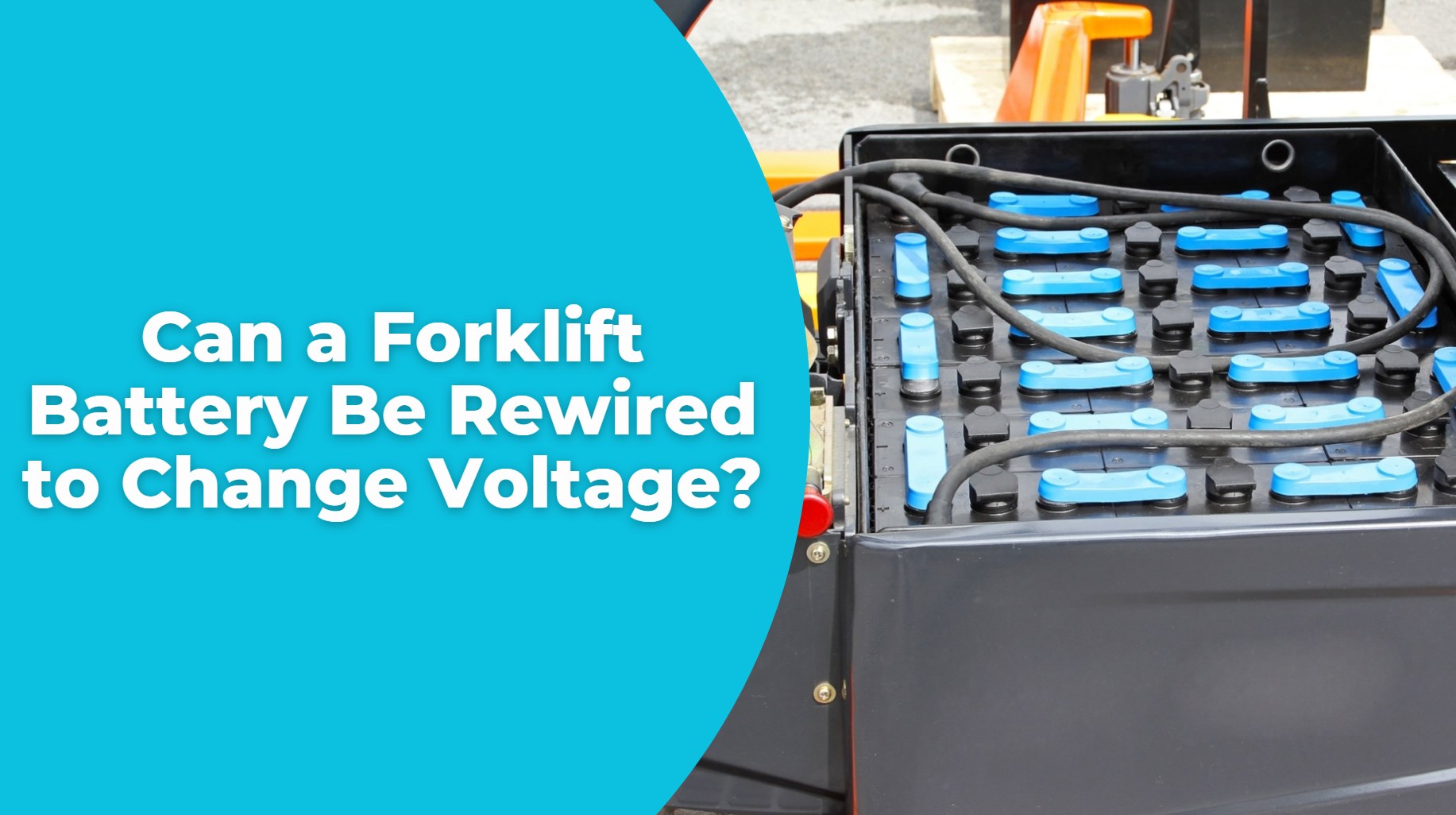Yes, a forklift battery can be rewired to change voltage; however, this requires expertise in electrical systems and adherence to safety standards. It’s crucial to ensure that the new configuration matches the forklift’s operational requirements and that all components are compatible.
In the realm of material handling and warehouse operations, the functionality and versatility of forklift batteries are pivotal. One intriguing query often posed by operators and technicians is whether a forklift battery can be rewired to change its voltage. This article delves into the complexities of forklift battery rewiring, exploring the technical possibilities, implications, and safety considerations involved.
Understanding Forklift Battery Voltage
Forklift batteries typically come in standard voltages of 24V, 36V, and 48V. These voltages correspond to the power requirements of different types and sizes of forklifts. The voltage of a battery determines the power output and the type of forklift it can support. Changing the voltage of a forklift battery can theoretically be achieved by rewiring the connections between the individual cells within the battery.
Battery Cell Configuration
A typical lead-acid forklift battery is composed of multiple cells, each delivering approximately 2 volts. For instance:
- A 24V battery contains 12 cells.
- A 36V battery contains 18 cells.
- A 48V battery contains 24 cells.
To alter the voltage of a forklift battery, the connections between these cells can be reconfigured. This involves changing the series or parallel connections to achieve the desired voltage output.
Rewiring for Voltage Modification
Technical Feasibility
Rewiring a forklift battery to change its voltage is technically possible but involves several critical steps:
- Assessment: Evaluate the existing battery configuration and the required voltage.
- Disassembly: Safely disassemble the battery to access individual cells.
- Reconfiguration: Modify the series and parallel connections between cells.
- Reassembly: Reassemble the battery, ensuring all connections are secure.
Step-by-Step Process
- Assessment: Before undertaking any modification, it is crucial to understand the existing configuration of the battery. This includes identifying the number of cells and their current connections. A thorough inspection will also help identify any damaged or weak cells that could compromise the battery’s performance post-reconfiguration.
- Disassembly: Disassembling a forklift battery requires caution. The battery must be completely disconnected from the forklift and any charging equipment. Use appropriate personal protective equipment (PPE) to safeguard against acid spills and electrical hazards. Carefully open the battery casing to access the individual cells.
- Reconfiguration: To change the voltage, you need to rewire the cells in series or parallel. For example, to change a 24V battery to 36V, additional cells must be connected in series. Conversely, to reduce the voltage, cells need to be reconfigured into parallel connections. This process involves careful handling and precise wiring to ensure that all cells are correctly connected.
- Reassembly: Once the cells are rewired, reassemble the battery casing securely. Double-check all connections and ensure there are no loose or exposed wires. Reconnect the battery to the forklift and test its performance under load.
Implications of Voltage Modification
Performance Considerations
Altering the voltage of a forklift battery can significantly impact the performance of the forklift. A higher voltage can enhance the power output and efficiency, potentially improving the forklift’s lifting capacity and speed. Conversely, reducing the voltage can decrease power output, which might be desirable for lighter-duty applications.
Compatibility Issues
Modifying the voltage of a forklift battery may result in compatibility issues with the forklift’s motor and electronic systems. Forklifts are designed to operate with specific voltage inputs, and changing the battery voltage can lead to operational inefficiencies or even damage the forklift’s electrical components.
Safety Concerns
Rewiring a forklift battery involves substantial safety risks. Incorrect wiring can lead to short circuits, overheating, and potential battery failure. The presence of sulfuric acid in lead-acid batteries poses additional hazards, including chemical burns and toxic gas emissions. It is imperative to follow strict safety protocols and, if unsure, consult a professional technician.
Legal and Warranty Considerations
Manufacturer Warranties
Most forklift batteries come with manufacturer warranties that could be voided by unauthorized modifications. Rewiring the battery to change its voltage may invalidate these warranties, leaving you liable for any future repairs or replacements.
Regulatory Compliance
There are specific regulations governing the modification and use of industrial batteries. Altering the voltage of a forklift battery could place the equipment out of compliance with safety standards set by organizations such as OSHA (Occupational Safety and Health Administration) and ANSI (American National Standards Institute).
Alternatives to Rewiring
Voltage Converters
Instead of rewiring the battery, consider using a voltage converter. These devices can step up or step down the voltage to match the requirements of different forklifts. Voltage converters can provide a flexible and safer alternative to direct battery modification.
Battery Replacement
In some cases, replacing the existing battery with one of the correct voltage may be a more viable option. This ensures compatibility and maintains the integrity of the forklift’s electrical system. Always consult with the forklift manufacturer or a professional technician before making such a decision.
Conclusion
While it is technically possible to rewire a forklift battery to change its voltage, the process involves significant risks and complexities. The potential benefits must be weighed against the safety concerns, compatibility issues, and legal implications. For many, exploring alternatives such as voltage converters or opting for a suitable battery replacement might be a more practical and safer solution.
When considering such modifications, it is essential to consult with experts and adhere to all safety guidelines to ensure the continued performance and longevity of your forklift operations.



